Mountains, majestic and awe-inspiring, are nature’s monuments that have captivated the imaginations of humans throughout history. They are not just towering giants of rock and ice, but complex ecosystems that house a diverse array of flora and fauna.
The formation of mountains involves several geological processes, such as the movement of tectonic plates, volcanic eruptions, and erosion by natural forces. They come in all shapes and sizes, from gently rolling hills to towering peaks that pierce the heavens. Some mountains are part of vast mountain ranges, while others stand alone as solitary sentinels.
The climate of mountains varies with altitude. At lower elevations, the climate is typically mild and temperate, with lush vegetation and abundant rainfall. As you climb higher, the temperature drops and the air becomes thinner. At high altitudes, the climate is harsh and unforgiving, with extreme cold, strong winds, and heavy snowfall.
Mountain’s
The mountain ranges serve as habitats for diverse flora and fauna The vegetation of mountains changes with altitude, creating distinct ecological zones. At lower elevations, you might find deciduous forests, coniferous forests, and grasslands. As you climb higher, the trees become stunted and eventually give way to alpine meadows and rocky tundra.
The animal life of mountains is equally diverse. Many species have adapted to the harsh conditions of high altitudes, including mountain goats, bighorn sheep, and snow leopards. Birds of prey, such as eagles and hawks, soar over the mountain peaks, while marmots and pikas scamper among the rocks.
Throughout human history and culture, mountains have held a position of immense significance. They have been revered as sacred places, sources of inspiration, and formidable obstacles to overcome. Mountains have been the setting for battles, pilgrimages, and exploration. They have also been the backdrop for countless works of art, literature, and music.
In recent years, mountains have become increasingly popular for recreation and tourism. People from all over the world come to the mountains to hike, climb, ski, snowboard, and enjoy the breathtaking scenery. Mountains offer a unique opportunity to experience the beauty and power of nature and to challenge oneself physically and mentally.
Mountains are not just geographical features; they are symbols of endurance, resilience, and the indomitable spirit of life. They remind us of the vastness of the natural world and our place within it. They inspire us to dream big, to strive for our goals, and to appreciate the simple beauty of the present moment.
- Largest Mountains in this World
- Mount Everest (8,848 m) – Nepal
- K2 Mount (8,611 m) – Pakistan
- Kangchenjunga (8,586 m) – Nepal/India border
- Lhotse Mountains(8,516 m) – Nepal/China border
- Makalu (8,463 m) – Nepal/China border
- Cho Oyu (8,201 m) – Nepal/China border
- Dhaulagiri Peaks (8,167 m) – Nepal
- Manaslu Mount (8,163 m) – Nepal
- Nanga Parbat (8,125 m)- Pakistan
- Annapurna I (8,091 m) – Nepal
Largest Mountains in this World
Mount Everest (8,848 m) – Nepal
Mount Everest, the world’s highest peak, stands at a majestic height of 8,848 meters (29,029 feet) and is located on the border between Nepal and China. This extraordinary mountain is a symbol of grandeur, beauty, and human perseverance, attracting climbers, adventurers, and explorers from around the globe.

Mount Everest is the centerpiece of the Himalayas, the world’s highest mountain range. It is part of the Mahalangur Himal sub-range, which includes other prominent peaks such as Lhotse, Makalu, and Cho Oyu. The mountains distinctive pyramidal shape and towering presence make it an awe-inspiring sight to behold.
The ascent to Mount Everest is a challenging and demanding endeavor, requiring technical climbing skills, endurance, and a great deal of mental fortitude. Climbers face a range of obstacles, including extreme weather conditions, high altitude, and the risk of avalanches and icefalls. The death zone, a region above 8,000 meters, presents climbers with a particularly dangerous environment due to the lack of oxygen and the body’s inability to recover.
Mount Everest
The first successful ascent of Mount Everest was achieved by Sir Edmund Hillary and Tenzing Norgay in 1953. Since then, thousands of climbers have attempted to reach the summit, and many have achieved their goal. However, the mountain has claimed the lives of hundreds of climbers due to accidents, avalanches, and medical emergencies.
Mount Everest holds a significant cultural and spiritual importance for the people of Nepal and Tibet. It is considered a sacred mountain, and many religious festivals and rituals are associated with it. The mountain is also a popular destination for trekkers and hikers. Who can explore the surrounding valleys and villages, experiencing the rich natural beauty and cultural heritage of the region.
The conservation and preservation of Mount Everest and its surrounding environment are critical to ensure its long-term well-being. Climate change, pollution, and the impact of human activity pose significant challenges to the delicate ecosystem of the Himalayas. Efforts are underway to protect the mountain and its biodiversity, including initiatives to reduce waste, minimize carbon emissions, and promote sustainable tourism practices.
Mount Everest continues to captivate the imagination and inspire awe in people worldwide. It stands as a symbol of human achievement, the pursuit of dreams, and the enduring beauty of the natural world.
K2 Mount (8,611 m) – Pakistan
K2, also known as Mount Godwin-Austen, is the second-highest mountain on Earth. With a summit elevation of 8,611 meters (28,251 feet) above sea level. It is located in the Karakoram mountain range, on the border between China and Pakistan. K2 is widely regarded as one of the most challenging mountains to climb, and has a reputation for being more technically difficult and dangerous than Mount Everest, the world’s highest peak.
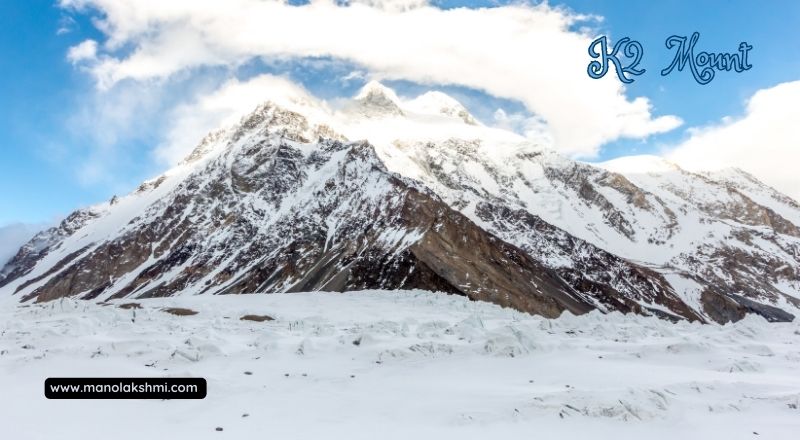
The mountain was named K2 by British surveyor Thomas Montgomerie in 1856. Who designated it as the second peak of the Karakoram range. The name “K2” is derived from the local Balti language, where “K” stands for “Koh” meaning mountain, and “2” indicates its position as the second-highest peak in the region.
K2 mountains
K2 presents climbers with a formidable challenge due to its steep slopes, unpredictable weather conditions, and high altitude. The climbing season typically runs from June to August, when the weather is relatively stable, but climbers must contend with extreme cold, strong winds, and the risk of avalanches.
Throughout history, numerous expeditions have attempted to reach the summit of K2, and the first successful ascent was achieved in 1954 by an Italian expedition led by Ardito Desio. Since then, only a handful of climbers have successfully reached the summit. The mountain has claimed the lives of several climbers who have perished during their attempts.
K2’s status as a mountaineering challenge has attracted climbers from all over the world. Who seek to test their physical and mental limits by tackling one of the most demanding peaks on Earth. However, the mountain demands respect and requires climbers to have exceptional technical skills, endurance, and a deep understanding of the risks involved.
Kangchenjunga (8,586 m) – Nepal/India border
Kangchenjunga, the third-highest mountain in the world, is a majestic peak located in the Himalayas. It is a symbol of strength, resilience, and beauty, and has captured the imagination of mountaineers, explorers, and adventurers for centuries.
Kangchenjunga’s summit, which stands at an elevation of 8,586 meters (28,169 feet). Is a formidable challenge for even the most experienced climbers. The mountain’s slopes are steep and treacherous, and the weather conditions can be extreme, making it one of the most difficult peaks to conquer in the world.
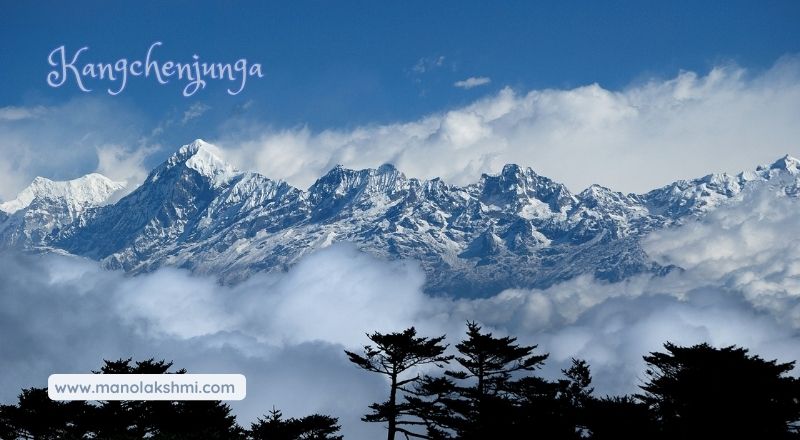
The name “Kangchenjunga” is derived from the Tibetan words “Kang” (snow), “Chen” (great), and “Dzonga” (treasure house). Which together translate to “The Great Treasure House of Snow.” This name aptly captures the mountain’s grandeur and its significance as a sacred site for the local people.
Kangchenjunga mount
Kangchenjunga is located in a remote and pristine region of the Himalayas, and its slopes are home to a diverse range of flora and fauna. The lower slopes are covered in dense forests, which gradually give way to alpine meadows and glaciers as one ascends. The mountain is also home to a number of rare and endangered species, including the snow leopard, the Himalayan tahr, and the red panda.
Kangchenjunga holds a special place in the hearts of the local people, who revere it as a sacred mountain. Many pilgrims make the arduous journey to the mountain’s base camp to pay homage and seek blessings. The mountain is also a popular destination for trekkers and mountaineers, who come from all over the world to experience its beauty and challenge themselves against its slopes.
Conquering Kangchenjunga is a lifelong dream for many mountaineers, and only a select few have succeeded in reaching its summit. The mountain demands respect and humility, and those who attempt to climb it must be prepared for the physical and mental challenges that lie ahead. Kangchenjunga is not just a mountain; it is a symbol of human determination, courage, and the pursuit of the extraordinary.
Lhotse Mountains(8,516 m) – Nepal/China border
Lhotse, the fourth-highest mountain in the world, stands at an awe-inspiring elevation of 8,516 meters (27,940 ft) in the Mahalangur Himal sub-range of the Himalayas. Nestled between Mount Everest and Makalu, Lhotse is a formidable peak that attracts intrepid mountaineers worldwide.
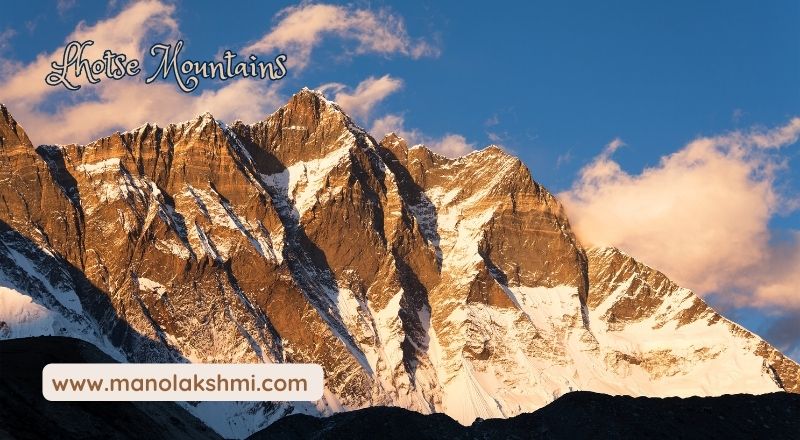
The name “Lhotse” is derived from the Tibetan words “lho” (south) and “tse” (peak), translating to “South Peak.” This name aptly describes Lhotse’s position, as it lies south of Mount Everest, the highest peak in the world. Lhotse is part of the Khumbu region of Nepal, and its majestic presence overlooks the villages of Pheriche and Pangboche.
Ascending Lhotse is a challenging endeavor reserved for experienced mountaineers. The standard route to the summit begins at the village of Lukla, where trekkers embark on a strenuous trek through the Everest Base Camp trek. The route involves negotiating steep slopes, icefalls, and treacherous crevasses, requiring technical climbing skills and resilience.
Lhotse mount
Lhotse’s challenging terrain has claimed the lives of several climbers over the years. The mountain’s steep slopes and unpredictable weather conditions contribute to its reputation as a formidable peak. However, the allure of conquering one of the world’s highest mountains continues to draw climbers from around the globe.
Lhotse’s summit offers climbers breathtaking panoramic vistas of the surrounding peaks, including Mount Everest, Makalu, and Cho Oyu. The experience of standing atop Lhotse, with the world seemingly stretched out below. Is a profound and awe-inspiring moment that rewards the climbers for their arduous efforts.
Lhotse is not only a mountain but also a symbol of human endeavor and the pursuit of seemingly insurmountable challenges. Its grandeur and beauty continue to captivate mountaineers and inspire awe in all who behold its towering presence.
Makalu (8,463 m) – Nepal/China border
Makalu, soaring at a majestic height of 8,463 meters (27,765 feet), stands tall on the border between Nepal and China. This formidable mountain, the fifth highest peak in the world, is a testament to the beauty and grandeur of the Himalayas.
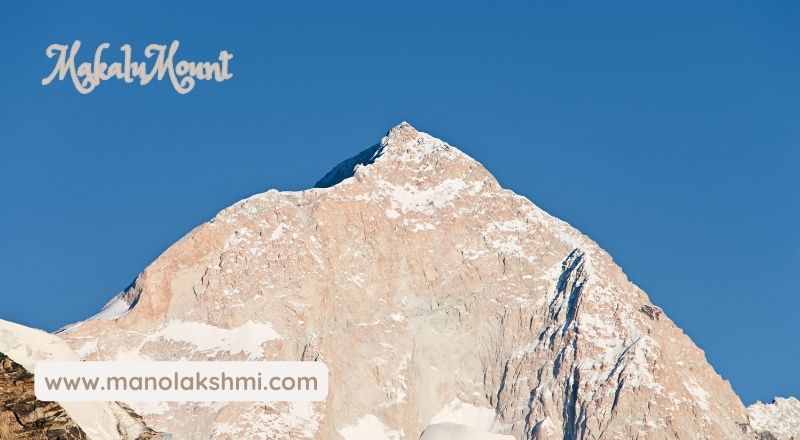
Makalu offers a challenging and rewarding experience for mountaineers and adventurers seeking to conquer its summit. Its steep slopes, treacherous icefalls, and unpredictable weather conditions demand technical skill, endurance, and a deep respect for the mountain’s unpredictable nature.
The ascent to Makalu begins from the Barun Valley in Nepal. A breathtakingly scenic region known for its lush forests, terraced fields, and cascading waterfalls. Trekkers make their way through picturesque villages and rhododendron forests, gradually gaining altitude as they approach the base camp.
From the base camp, climbers embark on the challenging task of ascending through steep rocky terrain, navigating crevasses, and crossing icy ridges. The route demands a combination of technical climbing skills, ice axe and crampon work, and a strong mental fortitude to overcome the physical and psychological challenges.
Makalu mount
The summit of Makalu offers a panoramic vista that is simply breathtaking. Climbers can feast their eyes on a vast expanse of snow-capped peaks, including Mount Everest, Lhotse, and Cho Oyu, all in one awe-inspiring panorama. The sense of accomplishment and the profound connection with nature make the arduous journey to the top truly unforgettable.
Makalu is more than just a mountain; it is a symbol of resilience, beauty, and the indomitable spirit of those who dare to challenge its slopes. Its slopes bear witness to the courage, determination, and camaraderie of climbers from around the world who have attempted to reach its summit.
Whether viewed from afar or experienced firsthand, Makalu stands as a powerful reminder of the majesty of the Himalayas and the allure of the world’s highest peaks.
Cho Oyu (8,201 m) – Nepal/China border
Cho Oyu, one of the world’s most magnificent peaks, stands tall at an elevation of 8,201 meters (26,906 feet) on the border between Nepal and China. It is the sixth-highest mountain on Earth and the third-highest peak in Nepal behind Mount Everest and Kangchenjunga.
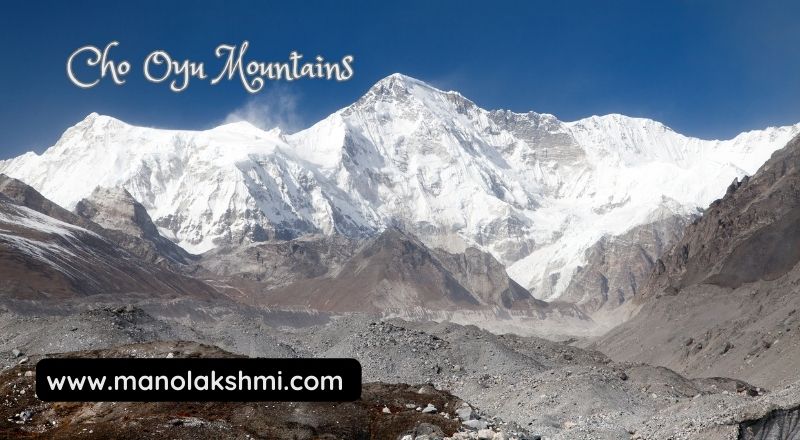
Cho Oyu’s name is derived from the Tibetan words “cho” (turquoise) and “oyu” (goddess), translating to “Turquoise Goddess.” Its distinctive shape and stunning turquoise-tinted summit have earned it the nickname “Goddess of the Turquoise Waters.”
Cho Oyu
The majestic Cho Oyu is situated in the Khumbu region of the Himalayas, surrounded by breathtaking scenery. Climbers seeking to conquer this giant can access it from both the north and south sides, each offering a challenging but rewarding ascent.
The north ridge route from Tibet is considered the standard route for experienced climbers. It involves navigating glaciers, icefalls, and steep slopes, culminating in a thrilling summit push.
On the other hand, the southwest face route from Nepal is less frequently attempted but offers a more technical and adventurous climb. It demands technical climbing skills and involves traversing steep rock and ice passages.
Cho Oyu presents a formidable challenge for climbers, but it is known for its relatively lower objective hazards compared to other 8000-meter peaks. The success rate of expeditions on Cho Oyu is generally higher, making it a popular choice for climbers seeking to experience the thrill of high-altitude mountaineering.
Despite its popularity, Cho Oyu has its risks. Climbers must contend with thin air, extreme weather conditions, and the possibility of altitude sickness, frostbite, and other health issues.
Upon reaching the summit of Cho Oyu, climbers are greeted with a breathtaking panoramic vista of the surrounding Himalayan giants. This awe-inspiring view includes Mount Everest, Lhotse, and Makalu, leaving a lasting impression on those who are fortunate enough to conquer this challenging peak. The experience of standing atop this majestic peak is a cherished memory for mountaineers worldwide.
Dhaulagiri Peaks (8,167 m) – Nepal
Dhaulagiri (8,167 m) – Nepal Dhaulagiri, the seventh-highest mountain in the world with an elevation of 8,167 meters (26,795 feet), is a breathtaking natural wonder in Nepal. The Dhaulagiri massif encompasses several peaks, including Mount Dhaulagiri, each exceeding 7,000 meters in elevation. Dhaulagiri is a popular destination for mountaineers and trekkers, offering a challenging but rewarding experience.

The Dhaulagiri massif is located in the western part of Nepal, near the border with China. It is a part of the Himalayas, the world’s highest mountain range. The massif consists of several peaks, including Dhaulagiri I, the highest peak. As well as Dhaulagiri II (7,751 m), Dhaulagiri III (7,715 m), and Dhaulagiri IV (7,661 m).
The ascent of Dhaulagiri is a technical and dangerous climb. The mountain has a high rate of fatalities, with over 50 climbers having died on its slopes since the first successful summit in 1960. The climbing season for Dhaulagiri is from September to November when the weather is generally more stable.
For trekkers, the Dhaulagiri region offers a variety of trekking routes, ranging from easy to challenging. The most popular trek is the Dhaulagiri Circuit, which takes around two weeks to complete. The circuit takes trekkers through a variety of landscapes, including lush forests, high mountain passes, and glaciers.
The Dhaulagiri region is home to various ethnic groups, such as Gurung, Magar, and Thakali people. These groups have their own unique cultures and traditions, and their villages are a fascinating place to visit.
In addition to its natural beauty and cultural attractions, the Dhaulagiri region is also a great place for wildlife viewing. The region is home to various animals, including snow leopards, blue sheep, and Himalayan tahr.
Manaslu Mount (8,163 m) – Nepal
Manaslu, standing at an imposing 8,163 meters above sea level, is the eighth-highest mountain in the world and a formidable challenge for mountaineers. Located in the beautiful country of Nepal, Manaslu offers a breathtaking and awe-inspiring sight.
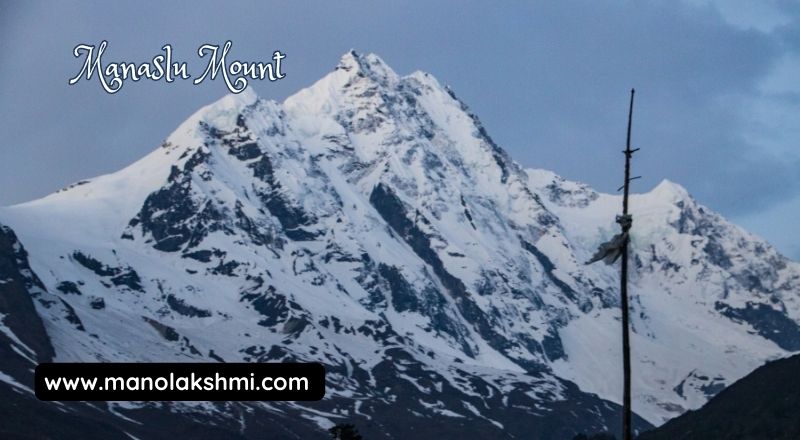
Nestled in the Mansiri Himal sub-range of the Himalayas, Manaslu’s majestic peak is surrounded by stunning landscapes. Its slopes are covered in snow and ice, while its base is adorned with lush green forests and alpine meadows. The mountain’s unique shape, resembling a pyramid, makes it instantly recognizable and a favorite among climbers and trekkers.
For those seeking an adventure, Manaslu offers a challenging and rewarding climb. The route to the summit requires technical skills and endurance, as climbers navigate steep slopes, crevasses, and unpredictable weather conditions.Only the brave embark on this extraordinary voyage, but the rewards they reap are beyond measure. The views from the top of Manaslu are nothing short of extraordinary, encompassing a vast panorama of the Himalayas and the surrounding countryside.
Manaslu
In addition to its allure for climbers, Manaslu is also home to a rich cultural heritage. The region around the mountain is inhabited by the Gurung and Bhotia people, who have preserved their traditions and way of life for centuries. Visitors to the area can experience their vibrant culture through traditional music, dance, and festivals.
The Manaslu Conservation Area, which encompasses the mountain and its surroundings, is a protected area that aims to preserve the region’s biodiversity. The area is home to a wide variety of flora and fauna, including endangered species such as the snow leopard and the red panda. Visitors can explore the conservation area through trekking trails that wind through pristine forests and offer glimpses of the region’s natural beauty.
Manaslu, with its imposing height, stunning scenery, and cultural significance, is a true gem of Nepal. It represents the spirit of adventure. The beauty of the Himalayas, and the resilience of the people who call this majestic mountain their home.
Nanga Parbat (8,125 m)- Pakistan
Nanga Parbat, also known as Diamir or the Naked Mountain, is the ninth-highest mountain in the world at 8,125 meters (26,660 feet) above sea level. It is located in Gilgit Baltistan, Pakistan, and is part of the Himalayas mountain range.
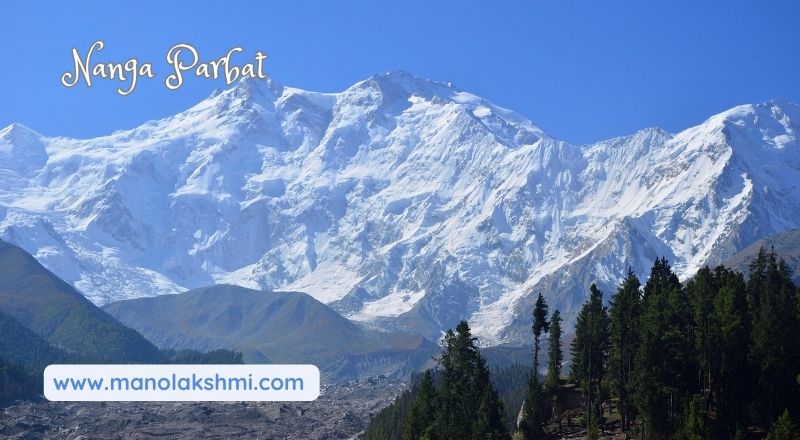
Nanga Parbat is considered one of the most challenging mountains to climb, due to its steep slopes, unpredictable weather, and high altitude. The mountain was first summited in 1953 by Hermann Buhl, an Austrian mountaineer. Since then, only a few hundred climbers have successfully reached the summit of Nanga Parbat.
The name Nanga Parbat comes from the Sanskrit words “naga” (naked) and “parvata” (mountain). This name is fitting, as the mountain’s steep slopes are often devoid of snow and ice, giving it a bare and exposed appearance. Renowned for its perilous slopes, Nanga Parbat has earned the chilling moniker, “Killer Mountain,” as a stark reminder of the many lives it has claimed. Over the years, more than 300 climbers have died attempting to reach the summit of Nanga Parbat.
Nanga Parbat Mountains
The mountain is a medley of plant and animal life. The lower slopes are covered in lush forests, while the higher slopes are home to alpine meadows and glaciers. Nanga Parbat is also home to some rare and endangered species, including the snow leopard and the Himalayan brown bear.
Nanga Parbat, with its towering peaks and stunning landscapes, attracts mountaineers and trekkers worldwide, making it a renowned destination for adventure enthusiasts. The mountain offers a challenging and rewarding climb, as well as stunning views of the Himalayas. There are several different routes to the summit of Nanga Parbat, each with its own unique set of challenges. Climbers typically spend several days acclimatizing to the high altitude before attempting the summit.
Nanga Parbat is a symbol of Pakistan’s natural beauty and its rich mountaineering heritage. The mountain is a source of pride for the people of Pakistan and is a popular tourist destination. – Pakistan
Annapurna I (8,091 m) – Nepal
Annapurna I, known as the “Goddess of Plenty” in Sanskrit. Is the tenth highest mountain in the world, standing at a majestic 8,091 meters (26,545 feet) above sea level. Located in the Annapurna range of the Himalayas in Nepal, it is part of the Annapurna massif, which consists of several peaks over 7,000 meters.
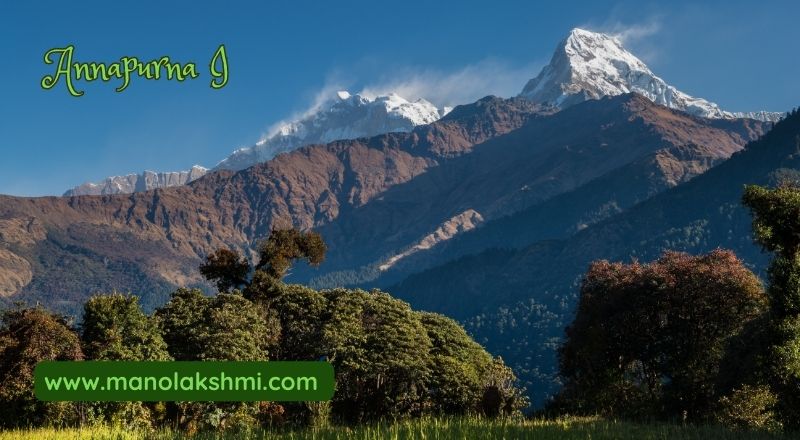
The Annapurna region is renowned for its breathtaking beauty, diverse landscapes, and rich cultural heritage. The slopes of Annapurna I are covered in glaciers and steep, rocky terrain, presenting a formidable challenge for mountaineers. The first successful ascent of the mountain was made by a French expedition in 1950, led by Maurice Herzog and Louis Lachenal. Since then, only a limited number of climbers have successfully reached. The summit due to its technical difficulty and unpredictable weather conditions.
Annapurna I
The Annapurna region is also home to the Annapurna Circuit. A popular trekking route that takes hikers through picturesque villages, terraced fields, and along the banks of roaring rivers. The trail offers stunning views of the Annapurna massif, including Annapurna I, and provides trekkers with a unique opportunity to experience the natural wonders and cultural diversity of the region.
In addition to its mountaineering and trekking significance, Annapurna I holds deep spiritual and cultural importance for the local people. The mountain is considered sacred, and many religious ceremonies and festivals are held in its honor. The Annapurna region is also home to several monasteries, temples, and shrines. Which attract pilgrims and tourists from around the world.
The beauty and grandeur of Annapurna I continue to inspire awe and wonder in all who behold it. Whether it is from the vantage point of a trekking trail or the summit of a neighboring peak. Annapurna I stands as a symbol of the indomitable spirit of nature and the boundless possibilities of human endeavor.
Click here: Longest Beaches: largest Beaches in this worldwide
